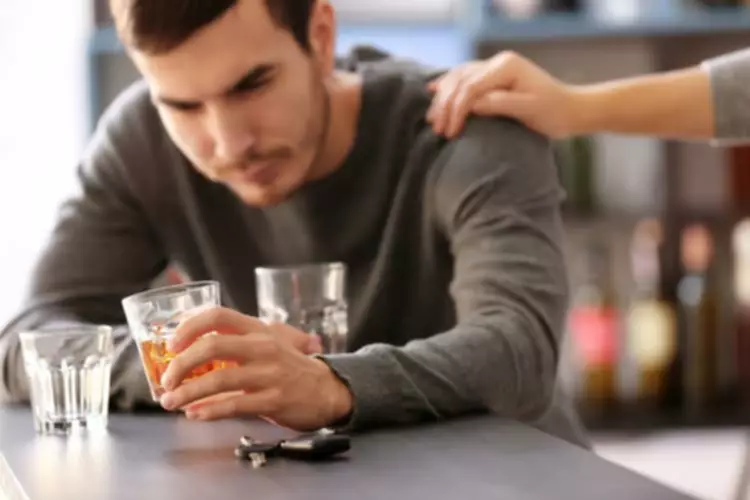Social Drinking Dangers: Are Social Drinkers At Risk Of Alcoholism?
In an effort to raise awareness, Goldman and several others decided to attempt to give the syndrome a broader profile by using the woman’s story as a case study, which they published last week in the Canadian Medical Association Journal. If you’re enjoying this article, consider supporting our award-winning journalism by subscribing. By purchasing a subscription you are helping to ensure the future of impactful stories about the discoveries and ideas shaping our world today. Any information published on this website or by this brand is not intended as a substitute for medical advice, and you should not take any action before consulting with a healthcare professional.
- However, challenges remain, including a lack of awareness about alcohol-related harms, insufficient regulatory structures, and the influence of the alcohol industry on policy-making.
- But as you continue to drink, you become drowsy and have less control over your actions.
- It is important that anyone who drinks, no matter how infrequently, is aware of the signs of alcohol abuse and seeks treatment if they observe two or more signs in themselves.
- The more I did that, the more secretive I became of my behavior, especially with my son.
- Casual drinking is a pattern of low-risk drinking that involves consuming alcohol in low doses on rare occasions.
- It has long been out of favor to declare that alcohol directly and invariantly affects emotional states.
The Fine Line Between Social Drinking and Alcoholism
Experts define social drinking by its lack of negative consequences and its place within a balanced lifestyle. When the term “high-functioning alcoholic” is mentioned, various types of drinkers often begin to question their own drinking and worry if they fall into this category. Part of this confusion is that many individuals are unclear about the differences between social drinkers, problem drinkers, and alcoholics. There is also a lack of awareness of what the true warning signs of alcoholism are. Social alcoholic drinking involves moderate and controlled alcohol consumption during social occasions without severe negative consequences. Alcoholism, on the other hand, is a chronic condition marked by uncontrolled drinking, cravings, physical dependence, and significant life disruptions.
Health dangers of drinking
In turn, groups with such beliefs would have had greater solidarity, allowing them to outcompete or absorb other groups. At any moment, someone’s aggravating behavior or our own bad luck can set us off on an emotional spiral that threatens to derail our entire day. Here’s how we can social drinking and drinking problem face our triggers with less reactivity so that we can get on with our lives. A sudden change in life, such as a divorce, death, or job loss, can lead to excessive stress. If you’re a recovering alcoholic, it’s best to avoid activities and environments that revolve around alcohol.
- There are a few telltale signs that you might need to adjust your approach to social drinking to semi or full sobriety.
- However, we’re not the first nation to use alcohol as a social lubricant.
- Moreover, the intersection of placebo deception effectiveness and social processes (placebo contagion effects, conformity, etc.) require examination.
- Residential treatment programs typically include licensed alcohol and drug counselors, social workers, nurses, doctors, and others with expertise and experience in treating alcohol use disorder.
Cultural Norms
“There’s also a lot of marketing of new alcohol products targeting women and especially moms,” said Mittal, at a time when everyone is watching a lot more TV. Add to that the pre-pandemic “mom wine culture that normalized and, in some ways, even glorified” alcohol, and the line between social drinking and at-risk drinking can quickly “become blurry,” she said. Risk and protective factors, prosocial peer affiliations, and synergistic relationships between social contexts are worth further research. Among immigrants, retaining the cultural values of the country of origin has shown to have protective influences on alcohol use, and this finding should be incorporated into future interventions for immigrant populations. Focusing on risk and protective factors will help inform future programs addressing alcohol initiation, specifically helping parents and communities understand how they may influence alcohol use among adolescents and young adults.

Perhaps messages have been sent from your phone that you don’t remember sending, or you find yourself in bed and don’t remember getting home. That’s a blackout and a sign that your social drinking passed a threshold. If you’ve experienced it, that’s a sign that your ability to “control” alcohol use is compromised. Finally, given the changing demographic landscape of the United States, including a larger and more diverse immigrant population, interventions and treatment options should also reflect the growing needs of certain groups.
- Additionally, the density of liquor stores in minority communities can impact access to alcohol and subsequent consumption patterns.
- Most known exposures are relatively low, but some can be high, particularly when people are exposed to a concentrated source over long periods of time.
- For an illustration of what followed, I direct you to the film Dazed and Confused.
- Despite men typically consuming more alcohol than women, women experience a ‘risk-severity paradox’ where they suffer greater health consequences at lower levels of alcohol exposure.
Alcohol of any amount can cause a relapse, and you can potentially lose all your hard work during recovery. For most people who relapse, it can take years to find recovery again, and many never make it back. Social drinking and alcoholism are different patterns of alcohol consumption. Fundamentally, their respective motivation is distinct, as social drinking is guided by the need to socialize and enjoy with friends or family. At the same time, alcoholism is a true health condition that involves physical alcohol dependence.
Can a Recovered Alcoholic Become a Social Drinker?
How many drinks a week is considered occasional drinking or casual drinking?





Sorry, the comment form is closed at this time.